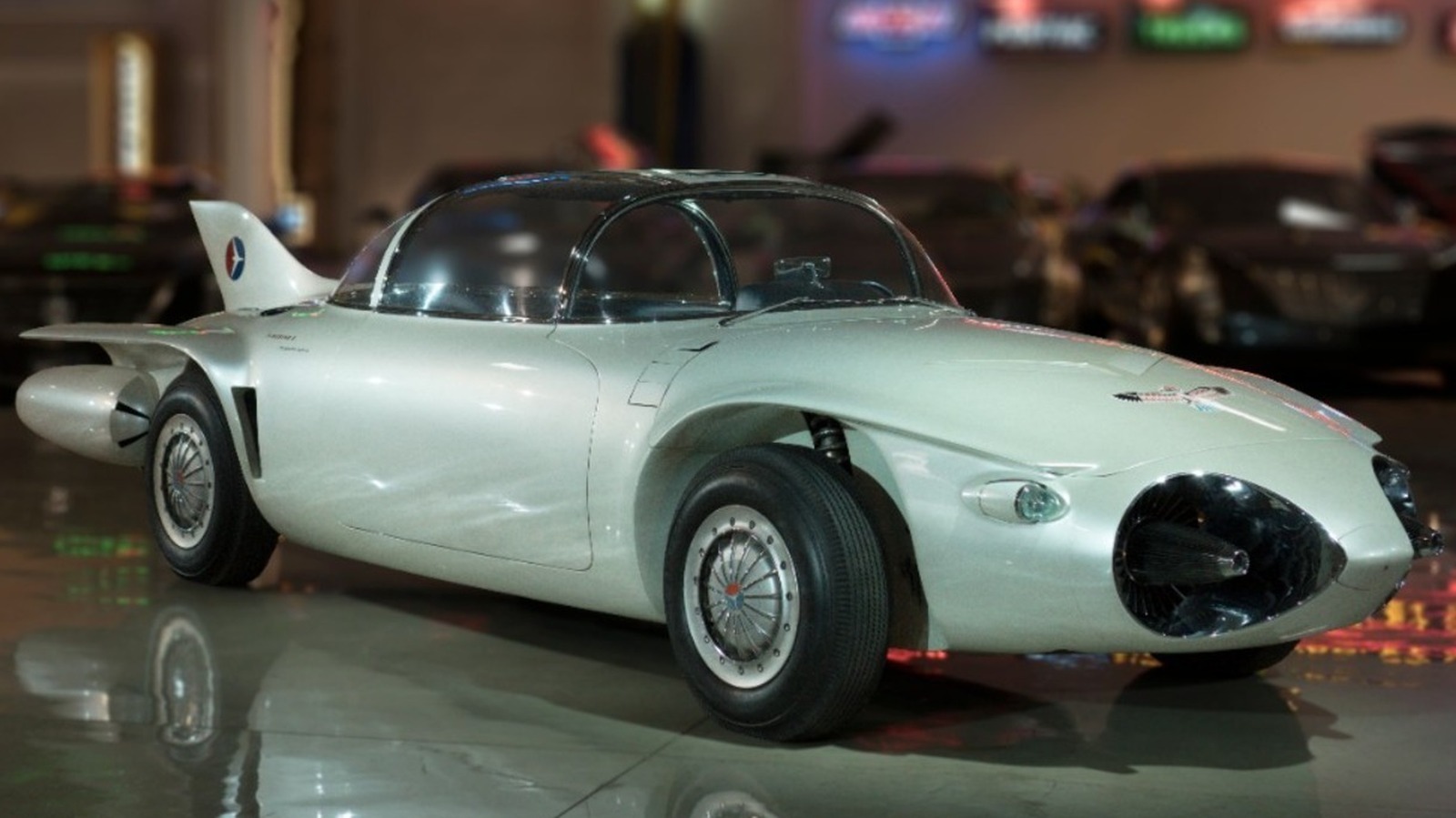
If you’re in the market for a high-revving engine, certain exotics like the Porsche 918 Spyder, Ferrari LaFerrari, and roaring Lexus LFA all have redlines of at least 9,000 rpm. To that, General Motors says, “Hold my beer.” Back in 1956, the automaker unveiled its borderline-science fiction Firebird II concept car at its Motorama show in New York City. Under the metaphorical hood was a gas turbine — pretty much a jet engine — that operated at an unfathomable 35,000 rpm.
The honor of the first gas-turbine-powered passenger car ever goes to General Motors’ 1954 XP-21 Firebird 1. However, the Firebird II improved greatly on its predecessor, which was hot, noisy, and only had one seat (for the driver). The Firebird II was much more practical, with seating for four and considerable insulation from the sound and the fury of its unique propulsion system, dubbed the “Whirlfire GT-304.”
The GT-304 idled at an already-bonkers 15,000 rpm and reached its full power potential at that screaming 35,000 rpm. As impressive as that sounds, the Firebird II only made about 200 horsepower. But GM said that the turbine engine could run on just about any highly flammable liquid, including gasoline or kerosene.
The Firebird II’s innovations were many
The Firebird II wasn’t just a one-trick pony, either. It featured a myriad of other technological advancements besides its road-going jet engine. First and foremost, the body was made from titanium. Said to be lightweight, strong, and corrosion-resistant, the titanium coachwork was left in its bare-metal state, then brushed to a lustrous satin finish.
Building car bodies from titanium may not have caught on with automakers, but the Firebird II had several other prescient features that are now commonplace. That includes an electronically actuated gear shifter, four-wheel independent suspension, and individual climate controls for driver and passenger. Even more indicative of the 21st century, the Firebird II was intended to have two display screens in lieu of a conventional dashboard, a rearview camera, and a self-driving feature for highway cruising. It’s worth mentioning that none of those high-tech features actually worked on the show car. At best, they were underdeveloped concepts or for display purposes only.
General Motors wasn’t alone in experimenting with turbine-powered vehicles. Throughout the following decades, Chrysler and Ford also developed futuristic looking turbine cars befitting the Space Age, and Toyota built a gas turbine sports car in the ’70s. Ultimately, the turbine engine was deemed unsuitable for passenger cars for several reasons, such as poor fuel economy and high cost. As for the Pontiac Firebird nameplate, well, you probably know that story already.

